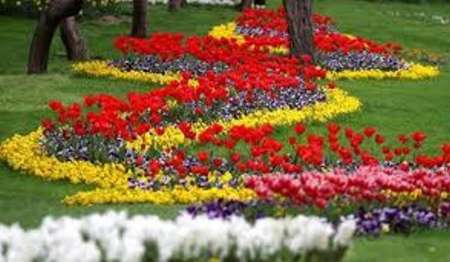
Mahallat: Iran's flower capital
Tehran, June 21, IRNA – A morning English-language newspaper on Sunday referred to the Central city of Mahallat in Markazi Province as Iran’s Capital of Flowers.
According to Iran Daily, Mahallat is famous for its large flower gardens and some even call it the ‘Holland of Iran’ likening the city to the Netherlands in terms of diversity of flowers and the areas under flora cultivation.
Professional floriculture dates back to 88 years in Mahallat. A simple worker named Yahyakhan learned all about growing flowers from his Dutch foreman in Tehran and took the knowledge with him to his birthplace, Mahallat.
The art of growing flowers was promoted and expanded by Yahyakhan and was later pursued by others. Today, 40 percent of Mahallat’s total population are either growers or sellers of flowers or engaged in jobs that are indirectly associated with the flower industry.
Florists of Mahallat are among the world’s most professional. Gladiolus, produced in the city, is the world’s most durable flower.
Mahallat won an award for producing fresh gladiolus in an international exhibition held in Osaka, Japan eight years ago. Iran competed with veteran producers of flowers from the Netherlands at the exhibition.
Mahallat is an oasis so that one has to traverse deserts and arid lands to reach the destination.
The first thing that strikes the visitors on arrival are rows of tall, ancient trees along each side of the streets.
The boulevards have been designed with flowers. All these scenes tell you that the choice of Mahallat as a destination was not a wrong one.
The Flower Village, located in the south of Mahallat, and Mahallat’s Garden of Flowers are two places highly recommended to visitors. With more than 300 greenhouses, all types of flowers, even the rarest, are found in Mahallat Garden of Flowers such that the scent of flowers is everywhere.
Mahallat also has the country’s largest cactus farm. Cactuses of diverse shapes and colors are found here.
The city is home to one of important spas as well. Spas of Mahallat are as important as its flowers. The temperature reaches 50 degrees centigrade in the spa, which has therapeutic properties due to various minerals that are found in the water.
Mahallat’s Sarcheshmeh Spring is among worth visiting. One can spend hours near the spring enjoying the cool weather under the shadow of the trees. The spring supplies drinking water as well as water for irrigation of flower gardens.
Mahallat is a historical city and home to a number of attractive monuments too.
The remains of Khorheh Temple — located in a village by the same name — are among the most visited historical sites in Iran.
Khorheh Temple dates back to more than 2,000 BCE, when Arsacide dynasty ruled the city.
Khorheh means ‘Location of Sunrise’ in Avesta. The name of Khorheh Temple has been mentioned in the book of Vanden Berghe, an emeritus professor of sociology and anthropology at the University of Washington.
Also, Mahallat is home to an ancient cave, dating back to seven million years, which is said to be the country’s most beautiful water cave.
One-day tours are very helpful in reducing the stress and anxiety which come from living in large cities. There is evidence that those who take trips though the year are 20 percent less likely to develop depression after retirement.
Taking bath with warm water reduces energy and helps people relax. It also helps detoxify the body, reduce the risk of infectious diseases. Floating in mineral waters two hours before going to bed leads to a better night’s sleep.
Spas help relieve the joint pains by reducing pressures on muscles and bones. Those using spas regularly are less likely to develop arthritis.
The spa reduces the blood pressure and is recommended to those suffering from hypertension.
Mahallat is one of the most attractive tourist destinations in Iran, but those traveling to the city must be careful since they can develop allergy from flowers’ pollen during the growing season.
To prevent the symptoms of allergy including runny nose, coughing, sneezing and eye irritations, tourists are recommended not to stay out for long hours.
Wearing sunglasses, which fully protects the eyes, is essential to prevent the pollen from reaching eyes. It is also recommended to keep the vehicle’s windows closed.
Insect bites are common in flower gardens. To prevent the allergy caused by insect’s bites, travelers are recommended to wear high-sleeved clothes, hat, socks and suitable shoes.










